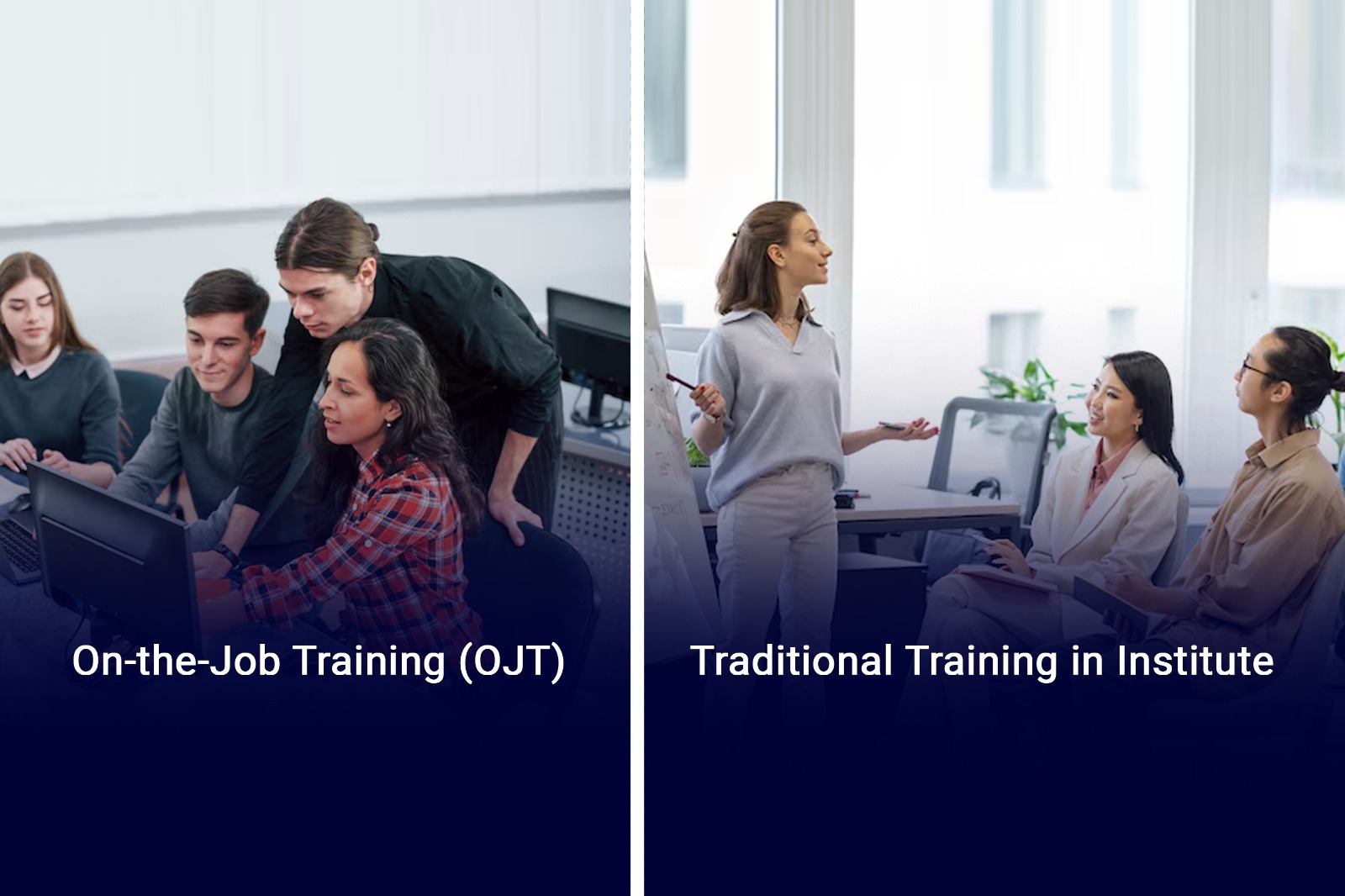
OJT vs Traditional Training in Institute: Which Works Best?
OJT vs Traditional Training in Institute: Which Works Best?
In today’s competitive world, getting the right training is very important for building a successful career. Many students and job seekers often wonder which training method is better — On-the-Job Training (OJT) or Traditional Training in Institutes. Both have their own benefits and limitations. Let’s understand what each means and find out which one works best for you.
What is On-the-Job Training (OJT)?
On-the-Job Training means learning while working at a real workplace. In this type of training, you get hands-on experience by doing actual job tasks under the guidance of a mentor or supervisor. OJT helps you understand the real working environment and improves your practical skills.
For example, if you join a company as an intern or trainee, you learn about the work processes, use software tools, and handle tasks that regular employees do. This kind of training is very useful for freshers as it gives them exposure to real work situations.
What is Traditional Training in Institutes?
Traditional training is classroom-based learning done in educational institutes or training centers. It usually includes lectures, notes, assignments, and exams. Here, you learn theory, concepts, and some practical knowledge through lab sessions or workshops.
Most colleges, coaching centers, and training institutes follow this method. They teach you basics and fundamentals about a particular subject or skill, but may not provide much exposure to real-world work challenges.
Comparing OJT and Traditional Training
1. Learning Experience
- OJT gives you real work experience and helps you understand how companies operate daily. You learn by doing, which builds confidence.
- Traditional training focuses more on theory and basic skills. It prepares you with knowledge but less with practical exposure.
2. Skill Development
- With OJT, you develop job-ready skills like communication, teamwork, problem-solving, and using actual tools or software.
- Traditional training improves your knowledge and conceptual understanding but may lack in building workplace soft skills.
3. Job Opportunities
- Employers prefer candidates with practical experience. OJT gives you a better chance to impress companies and get hired faster.
- Traditional training certificates are important, but without practical skills, you might struggle during interviews or job tasks.
4. Flexibility
- OJT depends on the company’s work schedule and environment, so it may be less flexible. You need to adjust to real office hours and pressure.
- Traditional training is more flexible with fixed classes and timings. You get a structured study routine.
5. Cost and Time
- OJT can sometimes be unpaid or low-paid, but it saves you money on fees and gives you earning opportunities.
- Traditional training often requires payment of fees, and may take longer before you start earning.
Which One Works Best?
Both OJT and Traditional Training have their own place in career development. However, in today’s job market, practical skills and real work experience matter a lot. OJT helps you learn what textbooks cannot teach. It makes you ready to face work challenges confidently.
That said, traditional training provides a strong foundation of knowledge which is also necessary. Without theory and understanding, practical work can be difficult. So, combining both methods is the best approach.
How to Use Both for Success?
1. Start with Traditional Training: Build your basic knowledge and skills through institute courses or online classes.
2. Move to OJT or Internship: Apply for internships or training programs to gain real work experience.
3. Keep Learning: Use what you learn in the workplace to improve further and clear doubts from books or mentors.
4. Be Adaptable: Every company has different ways of working, so stay flexible and open to learning.
If you want a strong career, do not choose between OJT and Traditional Training as if one is better than the other. Instead, use them together to get both knowledge and experience. This will increase your chances of success and help you grow faster in your career.
Remember, in India and globally, companies value candidates who can apply knowledge practically. So, focus on gaining hands-on experience and keep upgrading your skills regularly.